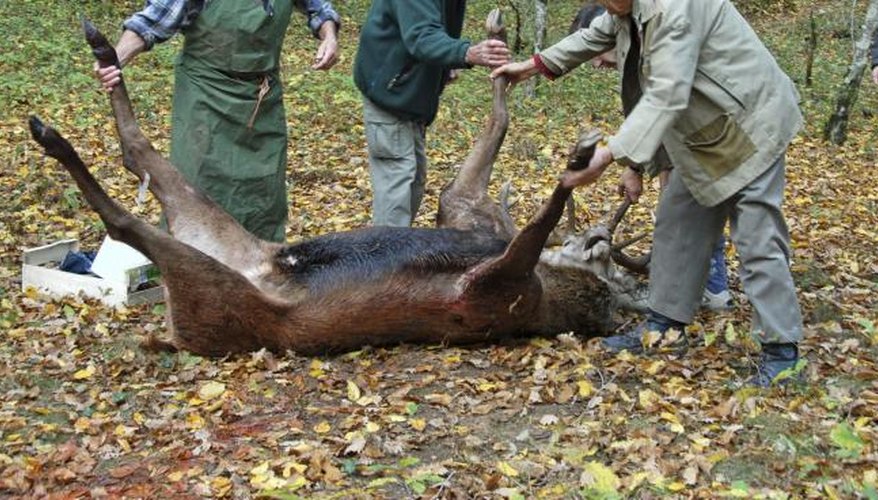
Some hunters prefer skinning and gutting a deer with a straight-blade knife. Others prefer a gut hook to cut through a deer's skin without nicking the intestines or damaging the muscle. You can also use a gut hook for removing the fascia and other membranes that connect a deer's internal organs to his rib cage.
Field Dressing a Deer Using a Gut Hook
Field dressing a deer helps prevent meat from spoiling before you can fully process it. The process involves opening the deer from the base of his rib cage to his anus. Slip the point of the gut hook into the skin where the ribs come together. Rest the sharp inner curve of the hook against the skin and pull down toward the tail, lifting the skin away from the body as you go. A sharp gut hook acts much like a zipper, opening the deer up easily. You'll also use the gut hook to reach into the body cavity to sever the deer's windpipe, thus allowing you to remove the intestines from the body.
Types of Gut Hooks
You'll find several types of gut hooks that work fine for field dressing a deer. Some fixed blade hunting knives have a gut hook attached to the spine of the knife. The knife's blade rounds at the end -- making it useful for skinning -- then rolls back into a c-shaped hook. You'll find pocket knives and multi-tools with gut hooks that snap into place when needed, as well as stand-alone gut hooks. Some models incorporate standard utility blades in the hook so you don't ever have to sharpen your gut hook.
Gut Hook Maintenance
Keeping your gut hook properly cleaned and sharpened is crucial to it performing properly when skinning a deer. Wipe the hook with a microfiber cloth dampened with warm soapy water. Remove flesh and debris lodged in crevices with a toothbrush. Dry it with a lint-free cloth and apply a thin layer of knife oil to prevent rust. Although it takes a little practice, you can sharpen your gut hook with a round ceramic knife file or a motorized multi-tool with a chain-saw sharpening attachment. If you're afraid of ruining your blade, a knife shop will be able to sharpen it for a nominal fee.
Potential Issues
A large fixed-blade knife or stand-alone gut hook is the sturdiest and most durable for processing a deer and won't break as easily as smaller folding models. Smaller models have the advantage of getting into tight spaces along the rib cage to remove inner membranes. Some inexpensive or dulled gut hooks tend to clog with hair as they cut, making a smooth zip cut impossible. If this happens, remove the gut hook from the hide and clean it before trying again. Sharpen the blade before your next outing or invest in a higher quality hook.
References
Writer Bio
Indulging her passion for wide open spaces and outdoor fitness through the written word on a full-time basis since 2010, author Jodi Thornton-O'Connell takes the mystery out of outdoor skills and guides readers to discover fun ways to physically connect to natural surroundings.



